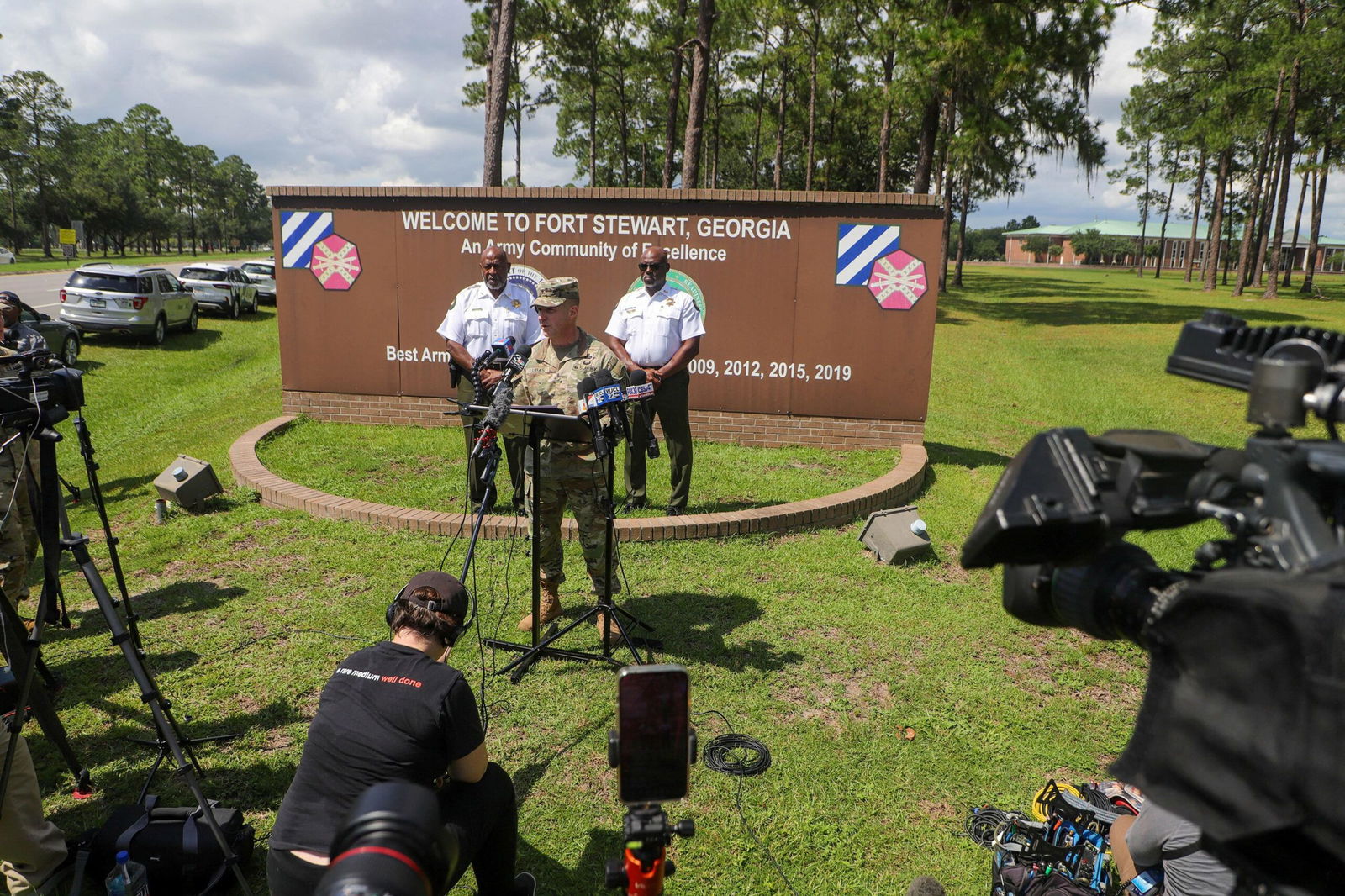The Fort Stewart shooting is the latest act of violence at a US military base

By Hanna Park, CNN
(CNN) — An active-duty Army sergeant is accused of shooting and wounding five of his fellow soldiers at Fort Stewart military base in Georgia on Wednesday, the latest act of violence on a US military base that raises questions about the safety of American servicemembers at facilities where they train, work and live.
28-year-old Sgt. Quornelius Samentrio Radford, an officer who worked in automated logistics, opened fire on coworkers with a personal handgun late in the morning, base officials said. Nearby soldiers “immediately and without hesitation tackled” and subdued him until he was arrested, said Brig. Gen. John Lubas, the commanding general of the 3rd Infantry Division, which is based at Fort Stewart.
Three of the soldiers underwent surgery, but all five are stable and expected to recover, Lubas said. “These soldiers, without a doubt, prevented further casualties or wounded,” he said.
The attack, which briefly put the base on lockdown, happened in the part of Fort Stewart that houses the 3rd Infantry Division’s so-called Spartan Brigade, a unit the Army calls its “most modern land fighting force.”
The same unit has experienced several tragedies, including the fatal shooting less than three years ago of an Army sergeant killed by a 28-year-old soldier in the brigade’s building complex, according to officials.
Last year, Fort Stewart’s military police simulated an active-shooter and hostage-rescue scenario. Such drills have been routine at US military bases for years, but Wednesday’s shooting is a reminder that even the most rigorous preparation can’t ensure complete safety.
Some other notable attacks at US military bases in recent years include:
Fort Hood
On November 5, 2009, an Army psychiatrist with radical Islamist beliefs opened fire at a processing center at Fort Hood, a major US Army post, in Texas, killing 13 people and an unborn child, and wounding more than 30 others.
The gunman, US Army Major Nidal Malik Hasan, was taken into custody after being shot by a wounded civilian officer. Hasan, an American Muslim psychiatrist, had shown signs of growing radicalization in the months leading up to the attack, according to investigators.
In 2013, Hasan was convicted of 13 counts of premeditated murder and 32 counts of attempted murder. He was sentenced to death and remains on death row at Fort Leavenworth, Kansas.
Washington Navy Yard
On September 16, 2013, a defense contractor and Navy reservist entered the Washington Navy Yard in the nation’s capital armed with a sawed-off shotgun and carried out a shooting rampage across the building’s halls and stairwells.
A dozen people were killed and eight others wounded. The gunman, Aaron Alexis, was killed by law enforcement.
Investigators discovered the deceased gunman had believed he was being influenced by “extremely low-frequency electromagnetic waves,” a delusional belief that reportedly drove him to commit the attack.
Fort Hood, again
The Texas base became the site of another mass shooting on April 2, 2014, when an Army specialist opened fire on his fellow soldiers, killing three and injuring 16 others with a .45-caliber pistol.
The attack erupted after an “escalating argument” the gunman, Ivan Lopez, had with his fellow soldiers at a Transportation Battalion administrative office at the base. Lopez then moved across the base, firing from his vehicle as he drove, before entering another administration building, where he continued his deadly spree.
Lopez, who was being treated for depression, anxiety, and other psychiatric conditions, ended the rampage by turning the gun on himself when confronted by a military police officer.
Investigators noted Lopez’s struggles with mental health and found no evidence of terrorism or that he had a specific target. Lopez had served a non-combat tour in Iraq as a truck driver and was evaluated for a traumatic brain injury.
Pearl Harbor
On December 4, 2019, a 22-year-old active-duty US Navy sailor opened fire at the Joint Base Pearl Harbor-Hickam naval shipyard in Honolulu, Hawaii. The attack left two Defense Department civilian workers dead and a third injured before the attacker, Gabriel A. Romero, took his own life.
The shooting occurred just days before the base was set to host thousands of visitors for a commemorative event marking the 78th anniversary of the Japanese attack on Pearl Harbor.
A Navy investigation found no formal motive for the incident, but Romero was reportedly dissatisfied with his commanders and had been in counseling, according to the Associated Press.
Pensacola Naval Air Station
Just two days after the Pearl Harbor shooting, a visiting second lieutenant from Saudi Arabia’s Royal Air Force launched a deadly attack at Florida’s Pensacola Naval Air Station.
Mohammed Alshamrani, in the US as part of a Pentagon-sponsored training program, opened fire with a handgun, killing three US Navy sailors and injuring eight others before being fatally shot by law enforcement.
Navy officials said the sailors who died “didn’t run from danger” and saved lives by confronting the gunman.
The Department of Justice officially labelled the December 6, 2019 attack “an act of terrorism” driven by jihadist ideology. FBI investigators found the attacker had longtime ties to al Qaeda and had communicated with operatives as recently as the night before the attack, raising concerns about the vetting process for foreign military personnel training in the US.
The-CNN-Wire
™ & © 2025 Cable News Network, Inc., a Warner Bros. Discovery Company. All rights reserved.



